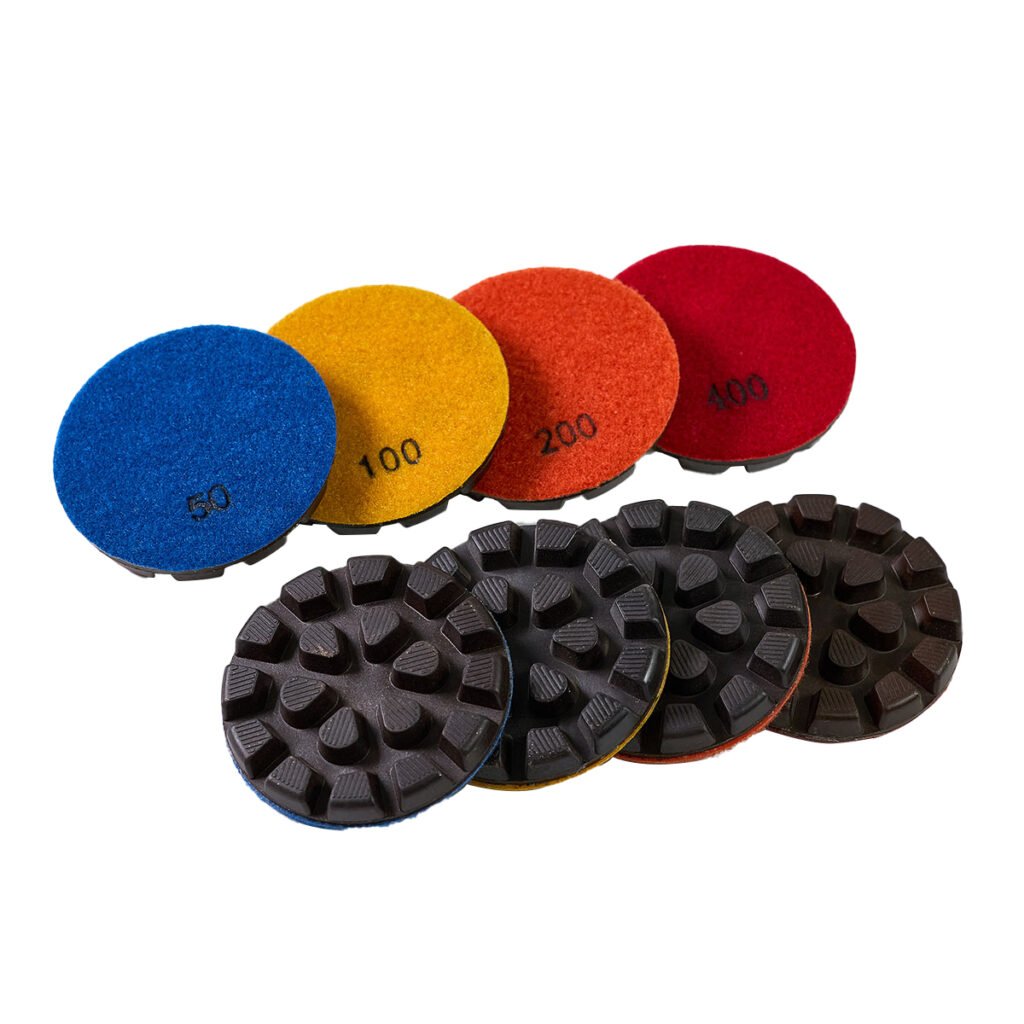Selecting the best polishing pads for floor renovation involves considering several key factors to ensure optimal results. Here’s a structured approach:
1. Floor Material
- Type: Match the pad to the floor material (e.g., marble, granite, concrete, wood). Softer stones like marble require less aggressive pads to avoid scratching.
- Hardness: Use the Mohs scale as a reference. Softer materials need lower-grit, gentler pads.
2. Pad Grit (Abrasiveness)
- Grit Sequence: Start with coarse grit (50-200) for heavy grinding, medium (200-800) for honing, and fine (800-3000+) for polishing. Adjust based on floor condition.
- Color Coding: Refer to manufacturer charts (e.g., red for coarse, white for polishing).

3. Machine Compatibility
- Type: Ensure pads fit your machine (rotary, planetary, handheld). Check size, attachment type (Velcro, magnetic), and RPM compatibility.
- Backing Plate: Verify pad thickness and backing material suitability.
4. Pad Type
- Diamond vs. Non-Diamond: Diamond pads (resin/metal-bonded) for hard materials/aggressive grinding; non-diamond for softer surfaces.
- Bond Hardness: Hard bonds for dense materials, soft bonds for softer surfaces.
5. Floor Condition & Desired Finish
- Damage Level: Use coarse pads for deep scratches, finer pads for light maintenance.
- Finish: High-gloss requires high-grit (3000+), matte finishes use medium grit.
6. Wet vs. Dry Polishing
- Wet Pads: Reduce dust, require slurry management. Ideal for indoor use with water-sensitive materials.
- Dry Pads: Need dust extraction systems. Faster but dustier.
7. Brand & Quality
- Reputation: Choose reputable brands (e.g., 3M, Bosch) based on reviews and professional recommendations.
- Durability: Balance cost with lifespan; higher-quality pads may save long-term.
8. Application Process
- Multi-Step Approach: Use a progression from coarse to fine grits. Test on a small area first to adjust strategy.
9. Safety & Environment
- PPE: Wear goggles, masks, and gloves.
- Environmental Impact: Consider slurry disposal for wet pads or dust control for dry.
10. Maintenance
- Cleaning: Clean pads regularly to prevent clogging. Some are reusable, others disposable.
Summary Checklist:
- Identify floor material and condition.
- Determine required grit progression and pad type.
- Ensure machine compatibility.
- Choose wet/dry method based on environment.
- Select quality brand and test pads.
- Follow safety protocols and environmental guidelines.
By systematically evaluating these factors, you can select the most effective polishing pads for a flawless floor renovation.

